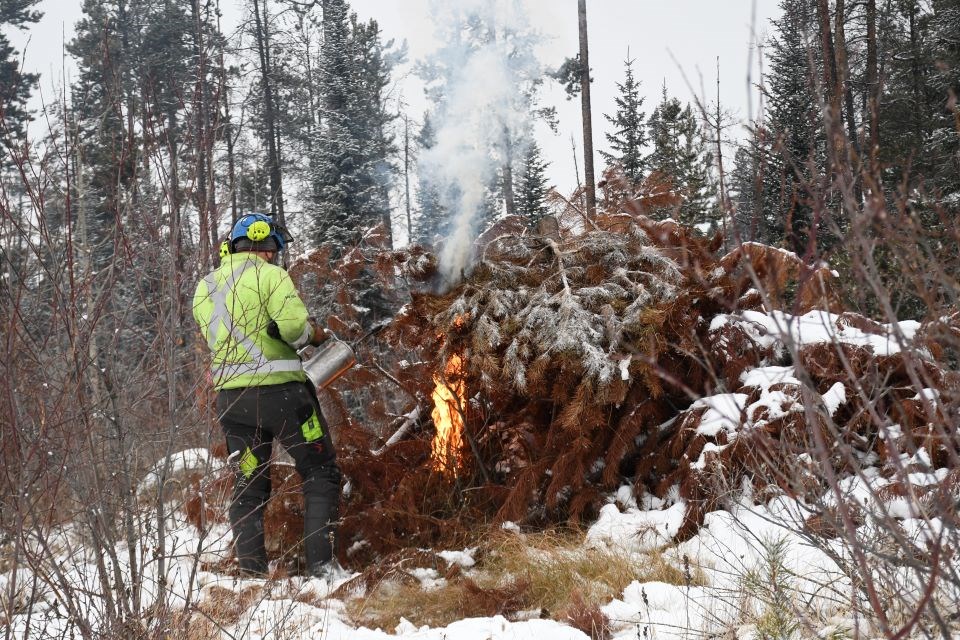Parks Canada is continuing wildfire risk reduction work in Jasper National Park this winter following the devastating wildfire last summer.
David Argument, resource conservation manager for Jasper National Park, acknowledged this work was “very much top of mind” for residents who continue to engage in rebuilding and recovery, as well as future visitors.
“We wanted to make sure that we are sharing information about our ongoing plans and future activities to conduct further and more extensive wildfire risk reduction moving forward,” Argument said.
Since the Jasper wildfire forced the evacuation of 25,000 people and destroyed 30 per cent of the townsite, many critics have asserted poor forest management was a major contributor to the disaster.
Parks Canada says it conducted significant wildfire risk reduction in Jasper National Park from 1994 to 2024, such as treating 1,700 hectares with fuel reduction in and around the Jasper townsite and burning 4,600 hectares through 45 prescribed fires.
“Carrying on from that groundwork, we’ll be further extending the zone of protection on the Pyramid Bench, pushing further west and filling in some of the areas that were left standing when we conducted the more extensive fuel treatment in 2018 and ‘19,” Argument said.
This winter, crews will remove this fuel through mechanical means such as handwork with chainsaws for smaller areas and heavier logging equipment for the larger patches of forest.
The west side of town, which was largely spared from this year’s wildfire, remains a high-risk area for the community. Parks Canada has maintained a community fireguard on the Pyramid Bench since the mid-’90s. This cleared area of about 50 hectares along the Cabin Lake fire road acts as a line of defence for responders controlling a wildfire.
To maintain this clear strip of land, crews need to periodically come in and remove regenerating pine, which they did last year.
“This year, now that we have frozen ground conditions and snow on the ground, it’s safe to go back in and actually burn those small trees that were cut down last year,” Argument said.
Crews are also conducting work around the wastewater treatment plant and will reduce fuel near Patricia Lake later this winter. In addition, Parks Canada is assessing the north slopes of Whistlers Mountain, southwest of town, for a potential fire control line.
Although the Jasper wildfire response is still under review, Argument noted tree thinning and other wildfire risk reduction work helped bring the crown fire – a fire that spreads from treetop to treetop – down to the ground, making it easier to fight.
“As that fire approach town, the fuel thinning work that we have done previously brought that fire down [until it was] a ground fire and allowed us to protect all the critical infrastructure in the community and save 70 per cent of the structures in town from this fire,” he said.
What caused the ignition in town was embers being thrown by the fire. As such, Parks Canada will work with the Municipality of Jasper on FireSmarting and improving fire resiliency on critical infrastructure. To ensure fire resiliency,
Argument added how there would always be a risk of wildfire in a community surrounded by coniferous trees, including Jasper.
“There remains fire risk on the landscape, and there always will, but the measures we’re putting in place to the west of the community up on a Pyramid Bench, pushing that zone of protection further west, will have a significant benefit in terms of further reducing that risk,” he said.




